Super Scientific Mushroom Soup
Jo Abbotts Amazing Mushroom Super Soup This is one of my favourite recipes. I set out to create a ‘go-to’ meal that, primarily, would support my families health needs, whilst also being a meal that I could freeze and turn too on those days when I completely forgot to organise food for the day! The ingredients list is for making 8 pints of soup. Good for veggies or paleo food plans. Please note: I use a military size pot and make 8-10 litres. Health benefits Regulates blood pressure (REF) Garlic Lowers cholesterol (REF) Garlic Reduces the ageing process (REF) Garlic Improves athletic performance (REF) Garlic Reduces risk of yeast infections (REF) Coconut milk (caprylic acid – neutralises any candida albicanus of the gut) Anti-inflammatory (REF) Turmeric root Supports disease fights within the immune system (REF) Turmeric root Increase oestrogen in menopausal women (REF) Garlic Superior management of microbiome (REF) ghee (Butyric Acid) carries the good …
Read MoreCanine Health Advice better than ours?
Becoming a Dog Owner Nearly five years ago my Partner and I made the HUGE decision to invest our-complete-selves into becoming Dog Owners. For me, I was incomplete without my canine friend, for my Partner it was about seeing me happy and sharing the magical times that come with owning a dog. Our dog is a male Golden Retriever called Ripley. He is a well-travelled dog, he has an unusual arsenal of games he likes to show guests, and albeit he is today a happy and healthy dog, like most dogs – he has had his up’s and down’s along the way. The best tool I continue to invest in to support my continued training and education as a dog owner is…. Dogs Monthly Magazine. It never bore’s me: every month it has new important updates to keep your dog happy and healthy, whilst adding tools to build the bond …
Read MoreWhat causes Multiple Sclerosis?
Causes Multiple Sclerosis If you research this question using Dr. Google You’ll find the most common answer remains ‘the exact cause of MS is unknown’, however, scientists believe that there are four factors that play a role in development of the disease: immunologic; immune system attacking the body genetic; 2>5% of MS Patients environmental; lack of sunshine causing lack of vitamin D viral; past history of illnesses Other risk factors? In addition to the list above there are other risk factors for developing MS; Sex: Women are two to three times more likely to develop MS than men are. Age: According to the Mayo Clinic, MS usually strikes between the ages of 20 and 40. What can make MS symptoms worse? Stress Smoking Heat Infections Medication Lack of sleep What is MS? Read More As a reader of my Blogs, you are here to find scientific, honest truth, and education about a certain …
Read MoreInjuries and their Tissue Mechanics 1/12
A Journey on injuries Tissue Mechanics Join me on a journey exploring injuries, here is your ‘open-ended ticket’ and I invite all disciplines involved in Health and Fitness to join in with intelligent discussions here – troll’s (cyber bullies) will not be tolerated and will be removed from drjoabbott.com. Over the next 12 weeks We shall be exploring the Evidence Based Medicine (EBM) world of injuries: What are injuries? How do injuries happen? What are the most common injuries? What happens when an injury occurs? What can we do to help? What advice should we be giving to a Patient/Client who has injured themselves? What rehabilitative tools should we be using/advising? Why do some people never improve post injury? Why do some injuries initiate a domino effect when going through rehab? When do we know we have optimised the rehab programme? And many more questions that I hear on a …
Read MoreInjuries and their Tissue Mechanics 2/12 (Warning: Prosected Images)
Personal Trainer to Clinical Anatomist When I worked at a Personal Trainer, with a successful client base, I quickly learnt that my anatomy education had been bias towards understanding the principles of anatomy through classic anatomy ‘book’ and it’s application to exercise rehabilitation. I personally believed there was a ‘missing link’ in my anatomy knowledge. In 2010 I begun my Clinical Anatomy Qualification at Keele University, Staffordshire. I spent three years dissecting and exploring our human form and documented the anatomy in the books we read was only present in 56% of the population – the rest have a variety of forms. For my final exam I chose to dissect the path of the sciatic nerve (SN); observe its anatomical relationship with the piriformis muscle (PM) and to measure; the diameter of the SN as it exits the greater sciatic foramen, the motor branches (MB’s), motor entry points (MEP’s) innervating the …
Read MoreThe Sciatic Nerve, it’s Anatomy, that will make you understand it’s Pain 3/12
What goes wrong? Compromising the sciatic nerve and its components by particular treatments, surgical interventions or injuries, limit day-to-day activities by affecting the lower extremity’s function. Musculoskeletal complications such as gait pattern deviations may occur i.e. drop foot, weak dorsi flexion and eversion, toe extensor difficulty, twisting ankle, tripping, sensory impairment to touch over the distal aspect of the leg and dorsum of the foot (Katirji & Wilbourn 1994, Vardi 2004, Viera et al. 2007, An et al. 2010) are signs of a compromised sciatic nerve, sciatica. Typical manifestations of trauma to the sciatic nerve include; idiopathic palsy; postural habits; rapid weight loss; intrinsic or extrinsic nerve tumours; potential sciatic cross-over paths of propagation of intraneural cysts or extra neural compression by synovial cyst; soft tissue trauma; osseous mass or large fabella (LeGeyt & Ambrose 1998, Loredo et al. 1998, Spinner et al. 2003, Dellon 2005, Pokorny 2006, Spinner et …
Read MoreBehind the Scenes of a Patient with Sciatica 4/12
Bigger Picture Stuff Full Patient/Client History is nothing to be taken likely when exploring sciatica – it is a quarter (see image below) of your initial exploratory investigations in to why the person is sitting in front of you seeking your help and support. Besides, have you ever met a Patient/Client (P/C) who doesn’t want to tell you about their woe’s? About the things that are bothering them? What causes their pain? What they are no longer able to do? What their goals are? And why they sought out your help? Taking good P/C history is the beginning of your journey together. This drives the ability to; set specific goals for you both: maximising outcomes in minimum time; and ensure you explore/define/question parts of their history allowing you to triangulate (a powerful technique that facilitates validation of data through cross verification from two or more sources) your theory (hypothesis). This …
Read MoreStrongman Competitor insidious Sciatica – Controversial Hack
Exploring in vivo Sciatica Case Studies – Strongman Competitor The following Strongman Case Study have been supplied by a Private Facebook Group. Thank you guys for sharing. All Case’s have been diagnosed with Sciatica, each with a individual’s story of events and symptoms. The name “sciatic” came via Latin from the Greek “ischiadikos” which means “subject to trouble in the hips or loins.” WARNING: there are moments of frankness! Case Study 2 Patient: 54 y/o Man Ranked 1st Bolton’s Masters Strongman (Competed since 2011) Event that provoked Sciatica: Strongman competition believes it was a loose yoke. Symptoms: “Pain through both legs during Competition” Previous injuries: (specific details unknown) Issues with left shoulder Bilaterally torn biceps Torn left latissimus dorsi and tricep Torn right hamstring (8 years ago) Torn a quadricep – not sure which one/side Dropped 2 atlas stones on feet: left foot has nerve damage, right foot has most pain Meaningful Task: Being …
Read MoreHow to conduct a great Consultation: pain and function
Narrative from a Personal Trainer “Client came to me with “sciatica”, diagnosed by GP many years ago, and this time self diagnosed by client himself with the help of Google & problems with gait”. There’s nothing wrong with using Google to help a person try to make some sense of their symptoms, as long as common sense is applied – use reputable website’s based on facts and not websites built on a persons belief system. The NHS figures show the number waiting at least a week to see their GP has risen by 56 per cent in five years, amid the longest waiting times on record, there is no wonder people are using the internet to provide them with the answers they need. “He is unable to walk properly due to his problems and feels like he is dragging one of his legs along with him”. Gait (walking/locomotion) is a …
Read MoreHow to Stop Rubbing & Robbing: Sciatica Case Study
Do we really ‘fix’ people? Or do we facilitate change? More and more disciplines in Manual Therapy are starting to report the importance of the Patients/clients health literacy: the ability to seek, understand and utilise health information, and what is important for good health. It is as important for patients/clients to obtain and process information related to their own specific health; choices of treatment and the best choice for the individual. This is a very challenging journey for the individual as health literacy is saturated with belief systems and poorly interpreted EBM. It is our role to guide, encourage, educate, re-connect, identify, and lead these individuals to the relevant matters and to possibly guide them away from fundamental misconceptions they may hold. How many patients/clients ‘give’ you their problems? If you take on that responsibility, be prepared to fail. When you fail, learn by your mistakes. What a huge responsibility! …
Read More

